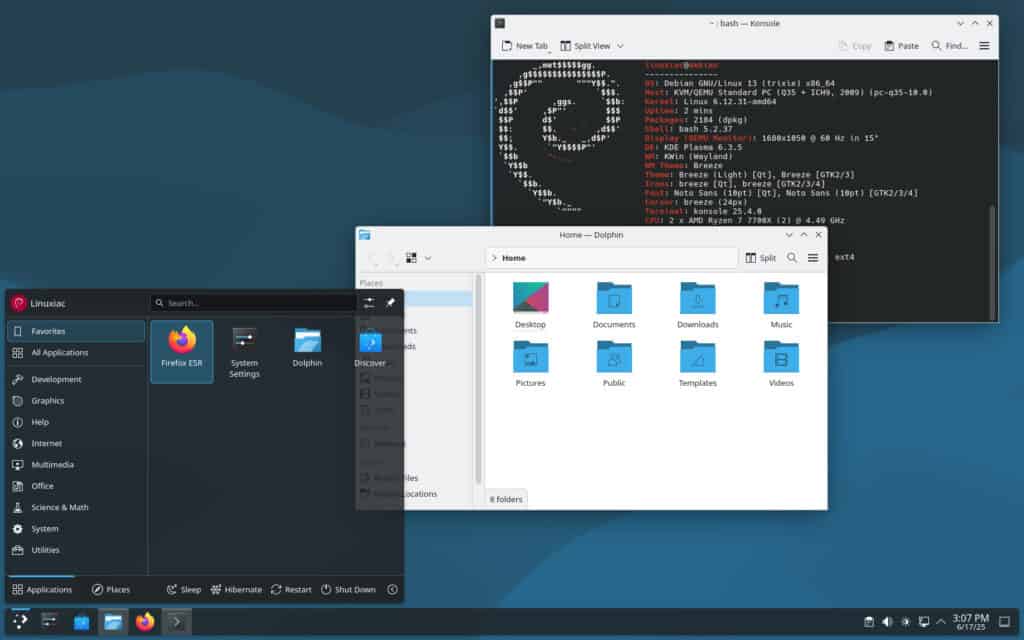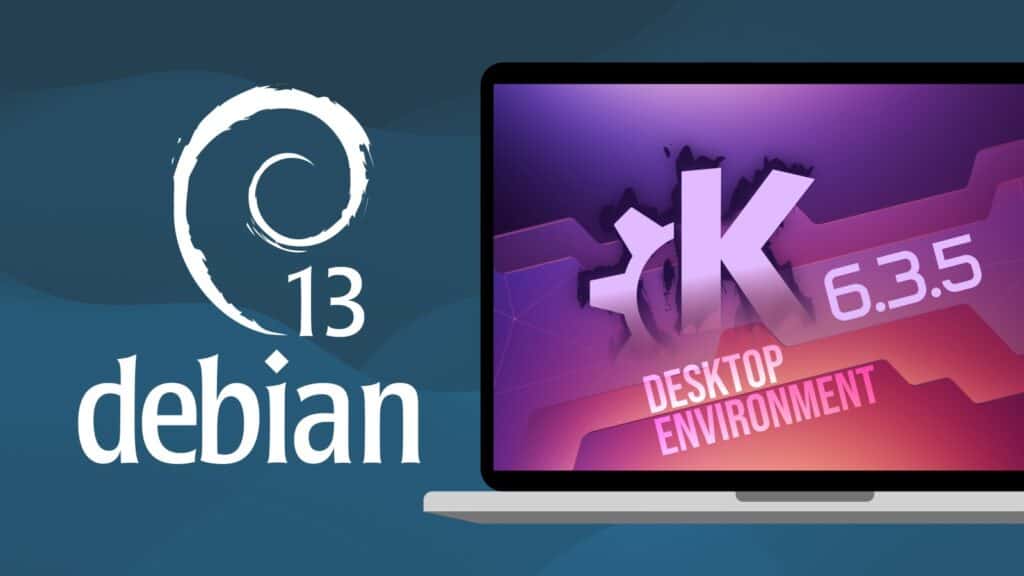Debian 13 is just around the corner, and it’s getting closer to its final form with each passing day.
We announced in early March that the Trixie release would include the KDE Plasma 6.3.5 desktop environment—and now that’s officially confirmed. The “plasma-desktop 6.3.5” package set has been migrated to the Debian Testing branch, which will become the final Debian 13 release once all remaining bugs are resolved.
Along with the Plasma 6.3.5 desktop (the last in the 6.3.x series), users also get the KDE Gear 25.04.2 apps collection, built on Qt version 6.8.2.
As we also informed you, starting on May 17, Trixie is currently in a hard freeze phase. This phase typically lasts several weeks—the final stage before a new version of Debian is officially released—and ends when everything is stable and ready for launch.
The inclusion of Plasma 6.3.5 marks a significant move forward compared to the current “Bookworm” release, which ships with the older Plasma 5.27 desktop. It’s a big step toward offering a modern, up-to-date desktop experience, especially for a distro known for playing it safe regarding software choices.

With that said, KDE users are in for a lot of great improvements, but if we had to sum it up, here are the biggest benefits:
- Wayland by default: Plasma 6 defaults to Wayland, which has matured significantly since the 5.x era.
- Qt 6 transition: Plasma 6 is based on Qt 6, enabling performance optimizations and better long-term support.
- Refined look and feel: Smoother animations, less visual clutter, improved contrast and spacing in widgets, and more consistent layout across desktop elements.
- New tiling system: Native window tiling support (added in Plasma 6.0) is further improved in 6.3.
- Better accessibility and input handling: Enhanced screen reader support, keyboard navigation, and tablet user fixes.
- Performance and battery life: Lower resource usage and better memory efficiency in long sessions.
Now, the big question on every Debian user’s mind is when to expect the final stable release of Debian 13, “Trixie.”
Well, as most longtime users know, Debian doesn’t work on fixed release dates or strict deadlines. Instead, it sticks to the philosophy of “it’ll be ready when it’s ready.” This approach ensures that each release is as stable, polished, and bug-free as possible, one of the main reasons Debian has built such a strong reputation for rock-solid reliability over the years.
So, even though things are a bit hard to predict right now, considering all the factors—such as Trixie’s final hard freeze phase—we can say with pretty high confidence that the stable Debian 13 release will arrive next month. So we only have a little longer to wait.

Kwin even on X11 crashes, has on x11 memory leaks and freezes computer. It’s been fixed in 6.4 with lots of kwin bug fixes. Debian 13 wiil NOT BE STABLE.